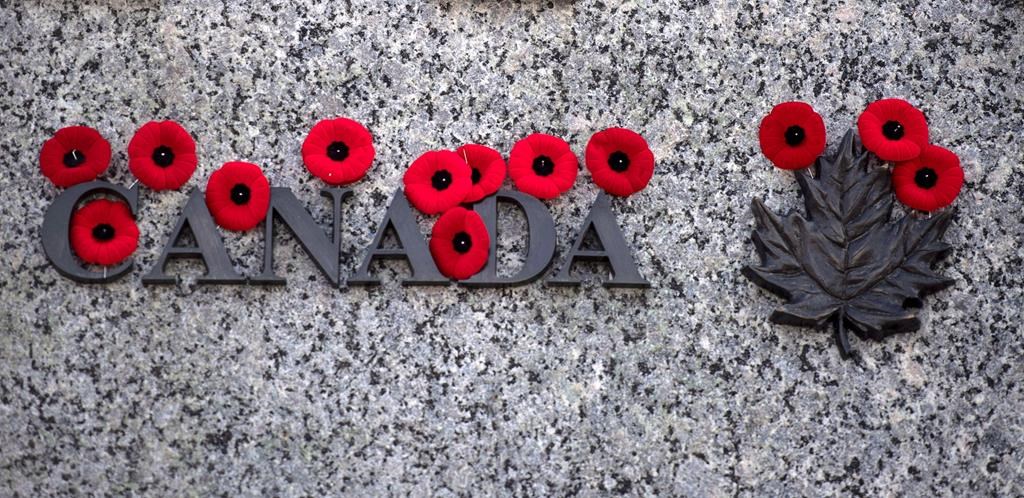Remember This? The early days of Valentine
Posted Feb 14, 2022 02:00:00 PM.
In this increasingly secular world, few keep track of the liturgical calendar of the Church that determines when feast days, including the celebration of saints, are to be observed.
If asked, other than Christmas and maybe Easter, people will likely remember just two dates—St. Patrick’s Day on March 17and St. Valentine’s Day on February 14, though the latter is typically shortened to just Valentine’s Day.
But if you look up February 14 in the Catholic Church calendar, you won’t find a celebration in honour of St. Valentine but rather a celebration of Saint Cyril and Saint Methodius who converted the Danube Slavs to Christianity in the 9th century, becoming known as the “Apostles of the Slavs.” (The Cyrillic alphabet is named after Saint Cyril.) St. Valentine used to be celebrated on that date, but, while he is still considered to be a saint by the Catholic Church, he was relegated to the minor leagues in 1969 owing to the lack of information about him.
While it’s possible that Valentine’s execution occurred on February 14, some Valentine experts believe the Church co-opted an existing Roman pagan festival, the Lupercalia, a three-day event that ended on the ides of February (February 15). The festival featured animal sacrifices and men and women cavorting in their birthday suits. As you might imagine, the Church wanted to snuff out this much-loved annual rite. St. Valentine’s Day was its response.
Celebration of St. Valentine’s Day is also linked to Geoffrey Chaucer, the famous 14th century author of the Canterbury Tales. Chaucer wrote a poem called Parlement of Foules [Fowls]. The seven-hundred-line poem, which refers to Dame Nature overseeing birds that have gathered to choose their mates, contains the first known reference to St. Valentine’s Day as a special day for lovers. For this was on Seynt Valentynes day, When every foul cometh ther to chese [choose] his make [mate]…” [lines 309-310].
The first known Valentine’s Day greeting was apparently sent in 1415 by the Duc d’Orléans to his wife. The Duke, captured by the English at the Battle of Agincourt, was being held for ransom in the Tower of London.
Shakespeare gets into the act at the beginning of the 17th century with Ophelia in Hamlet saying To-morrow is Saint Valentine’s day, All is in the morning betime, And I a maid at your window, To be your Valentine [Act 4, Scene 5].
The first reference to Valentine’s Day that I could find in Ottawa papers, dates back to the end of January 1848 when Ottawa was still known as Bytown. Henry Bishoprick, who sold writing desks, plateware and china, advertised in The Packet, the forerunner of the Ottawa Citizen, that he had an assortment of “Valentines for sale by the dozen or single.” Two years later, The Packetpublished on its front page a lengthy Valentine poem about Cupid written by Mrs. J. Y. Foster. The first verse ran:
Young maiden! Fair maiden! I bid you beware!
There is a sly spirit aloft in the air!
Though veiled by a mist from the bodily eye,
He glides in a fairy-formed chariot bye;
Two ring-doves yoked lovingly bear him along—
He is laden with poetry, blossoms and song;
Flames kindling and darting, his chariot illume,
But rose-hued and harmless, they fail to consume,
Though helpless he looks, yet all bow to his sway,
And he wounds who he pleased on Valentine’s Day.
By the mid-1860s, the exchange of Valentine cards was in full swing. At the time, one could send letters and cards through the mail without affixing postage. This required the recipient to pay the one cent fee for local delivery. In 1870, an article in the Ottawa Citizen advised senders of Valentine cards to pay the postage upfront. If the postage was not paid “even the most tender of Valentines, instead of fulfilling its high mission of kindling a mutual flame in the adored one’s breast, will only eventually promote combustion in the stoves of the Dead Letter Office.”
Cards and other Valentine gifts began to appear in stationery shop windows along Sparks and Rideau Streets in late January. They ranged from the sentimental to the comic, costing as low as one cent up to more than seven dollars. Consequently, there was something for every budget.
Reportedly, the cheapest cards typically depicted a white or a pale-tinted tablet bearing some appropriate sentimental or romantic inscription. The tablet was surrounded by bouquets of violets or roses. Cards made in England often featured verses by the Irish poet, William Allingham, the author of The Fairies, a poem still popular today with children. Another favoured author was Jean Ingelow.
She burst on the literary scene in the 1860s with a book of poems. One of her most famous called Divided tells the tale of two lovers walking hand-in-hand on opposite sides of a little brook which gradually broadens to become a major river—very appropriate material for Valentine cards! English cards might also feature paper lace and silver foil. For a time, they were also decorated with feathers. In 1872, London newspapers protested this frivolity which had led to the demise of thousands of songbirds, including chaffinches, wrens, sparrows, linnets, and robins.
American Valentine cards, which were produced in the millions in a factory in Brooklyn, NY, apparently used verses of anonymous writers. A typical sentiment might be: Tho’ this heart but plasterboard be, There is a warmer one for thee. The American cards were often brilliantly coloured and featured hearts, blossoms and leaves with bevelled edges. Some depicted girls reading letters or plucking daisy petals.
However, not all Valentine cards were sweet and loving. Comic cards, sometimes called vinegar valentines, could be hurtful to the receiver. Their principal feature were ugly caricatures of men and women with unkind messages. Comic cards actually outsold the traditional, sentimental cards during the 1870s. At one point, three-quarters of the cards made by the Brooklyn factory were comic cards.
In 1872, the Ottawa Citizen ranted that Valentine’s Day was not being honoured with as much “love lettering as in the days of yore,” due to the baleful influence of “those cheap abominations called comic valentines by which mean and cruel people vent their envy and spleen.” That same year, a carter on Sussex Street sent a rival carter on the same street a vinegar Valentine card. This led to considerable hard feelings. The card’s recipient took the matter to court. Unfortunately, the outcome of the case was not reported.
Like today, picking and choosing the right Valentine to send to one’s love, could be a difficult and even traumatic event. Back in the 19th century, there was an additional hurdle for the shy or bashful to overcome. Purchasers couldn’t simply go into a store and look through a rack of cards. Instead, the buyer would tell a salesclerk what he or she wanted. The clerk would then bring out the requested type of Valentine cards for examination.
A story appeared in the Citizen in 1877 describing the plight of a young man who, after peering at the display of cards in the shop’s window, anxiously looked up and down the street before entering, fearful of being recognized. Then, once inside, the poor youth blushed when he stammered out the requested article. Leaving the store, he hid his newly purchased Valentine’s card in his ulster (a long winter coat), his heart “beating fast at the thought of the dear bright eyes that will scan the glowing words.” This was clearly a more innocent age.
Another story described the predicament of a “young gentleman” under ten years of age. He preferred the cheaper kind of Valentine card owing to the number he had to send. He said: “A fellow has to send a Valentine to his girl, another to his chum’s girl, and one to the prettiest girl in his class because he likes her, and one to the ugliest girl because she’ll feel bad if she has none, and one to his teacher, and one to each of his cousins.”
The one person who did not appreciate Valentine’s Day was the postman. Having just recovered from picking up and delivering thousands of Christmas cards, he had to do the same with thousands of Valentine’s Day cards.








